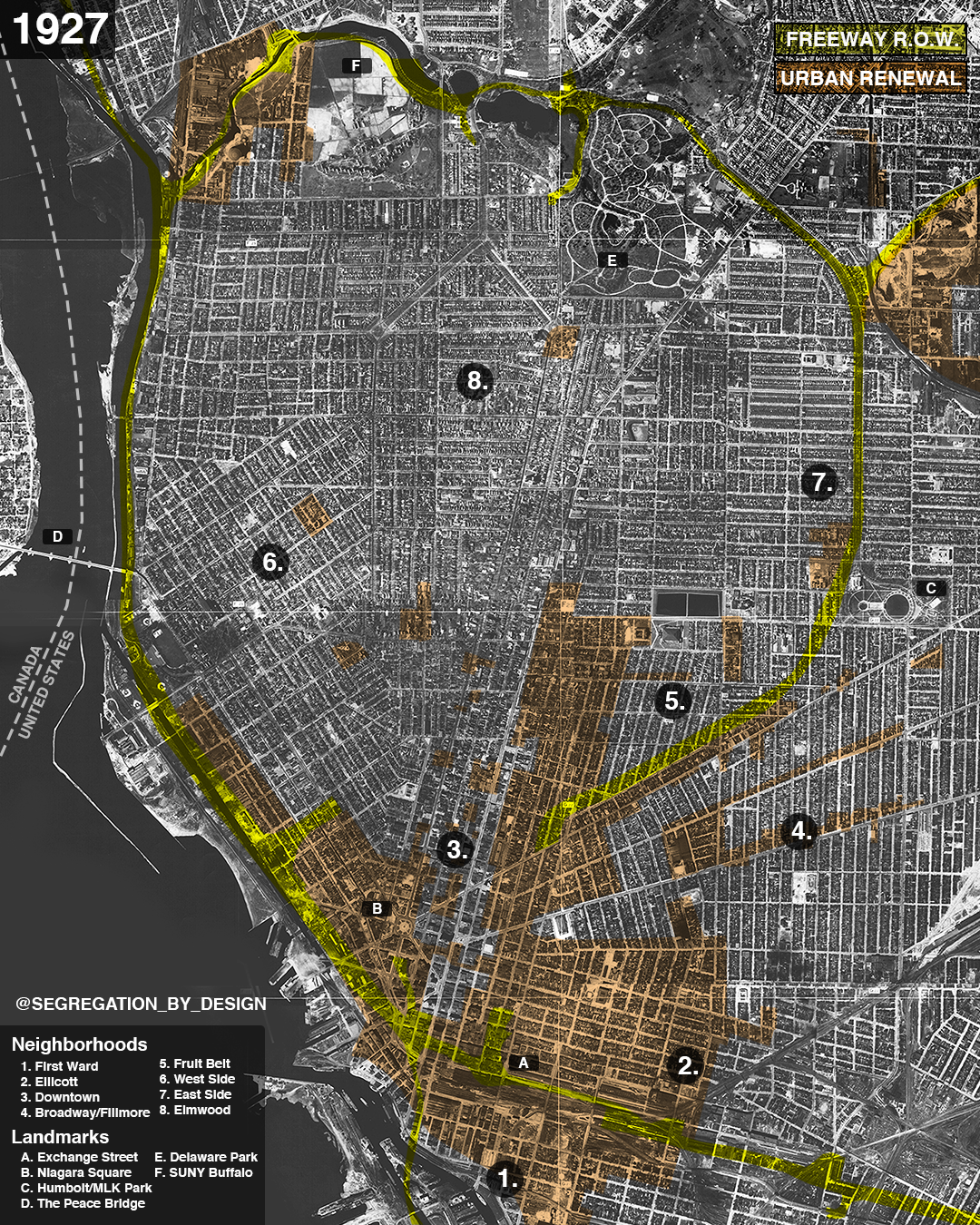BUFFALO: FREEWAYS & URBAN RENEWAL
In 1900 Buffalo was the 8th largest city in the US. Today it is the 86th. From a peak of 580,000 residents, today there are 250,000. With the opening of the St Lawrence Seaway in 1959, Buffalo had lost the engine which had powered its ascent: the primacy of the Erie Canal for inland shipping. In the 1960s, as ships began using the St Lawrence and bypassing Buffalo, shipbuilding also wound down due to the lack of waterfront activity. Steel followed, with local companies merging into larger conglomerates and production moving away. Between 1970 and 1984 the region lost 70,000 jobs.
This is the backdrop against which the city’s planners were operating in the middle of the 20th c. Their solution as always was the wholesale destruction of what they deemed “blighted areas,” almost entirely based on racial composition. In their place would go new highways extending to the racially-restricted suburbs. The dense urban fabric of Downtown was to be replaced with grid-busting office complexes and surface parking, the area’s former residents shunted to shoddily built high-rise residential towers overlooking the new freeways.
This being New York, Robert Moses himself planned Buffalo’s highway system, ramming a freeway vertically down the spine of Buffalo, entirely engulfing the Humboldt Parkway, a tree-lined boulevard which had constituted the central link in Buffalo’s park system. The freeway also capped over the Erie Canal, putting the final nail in the coffin of the city’s industrial foundation.
White Buffalonians used these new freeways to access the new suburbs, enticed by generous government subsidies. Between 1950-1960 alone over 80,000 White Buffalonians left the city. Meanwhile, while the total population fell, the African-American population rose, doubling from 35k to 70k between 1950 and 1960 from those escaping the Jim Crow south seeking work in the steel mills. Overcrowding in the downtown African-American neighborhoods made them enticing targets for “slum clearance.” In all, roughly 10,000 people were displaced due to freeway construction and urban renewal in Buffalo, around 67% of which were people of color. More on the specific projects in upcoming posts.





